
This story originally appeared on Stacker and was produced and distributed in partnership with Stacker Studio.
Highest-paying metros for real estate agents
Real estate agents play a crucial role in home buying, crunching numbers and conducting business to find the right home for clients and their families. As with every profession, things have become more uncertain in light of the COVID-19 pandemic, with the national economy suffering major blows since early 2020. However, many U.S. housing markets are thriving as people seek better homes and more room. The national media annual wage for real estate agents is $48,930, but where do agents get paid the most?
To help answer this question, Sundae used 2019 data from the U.S. Bureau of Labor Statistics’ Occupational Employment Statistics, last updated on July 6, 2020, to create a list of the 20 highest-paying metros for real estate sales agents. Each metro is ranked according to its median annual wage for real estate sales agents, and also includes data for the 90th percentile wage, median hourly wage, and employment in the metro. It’s important to reiterate that this data was collected before the pandemic and its economic impacts occurred. Also, in order to not skew the data, metro areas with less than 100 real estate agents were not included in this list.
Read on to see if your metro made the cut.

#20. Colorado Springs, Colorado
- Median annual wage: $65,970 (34.8% greater than national average)
- 90th percentile wage: $115,840 (3.6% greater than national average)
- Median hourly wage: $31.72
- Employment: 410 (1.4 per 1,000 jobs)
Despite local economic fallout because of the pandemic, home prices and construction in Colorado Springs continue to surge. Mortgage rates are at an all-time low, but the city faces a shortage of single-family homes on the market.

#19. Eastern Utah nonmetropolitan area
- Median annual wage: $66,550 (36.0% greater than national average)
- 90th percentile wage: $133,580 (19.5% greater than national average)
- Median hourly wage: $31.99
- Employment: 200 (2.5 per 1,000 jobs)
Even more so than the major metropolitan area of Salt Lake City, the Eastern Utah nonmetropolitan area has fostered one of the hottest housing markets in the country. In particular, home prices in nearby Provo rose by 20.3% from 2018 to 2020, with the number of available properties dropping steeply, while prices in Ogden have risen by over $55,000 in that time period.

#18. San Diego-Carlsbad, California
- Median annual wage: $67,190 (37.3% greater than national average)
- 90th percentile wage: $108,290 (3.1% less than national average)
- Median hourly wage: $32.30
- Employment: 770 (0.5 per 1,000 jobs)
The economy in San Diego is expected to improve in 2021, as San Diego’s unemployment rate is currently 29% lower than the California average, and 22% below the national average. Home values and GDP per capita are also rising in the area, while long-term mortgage rates remain low.
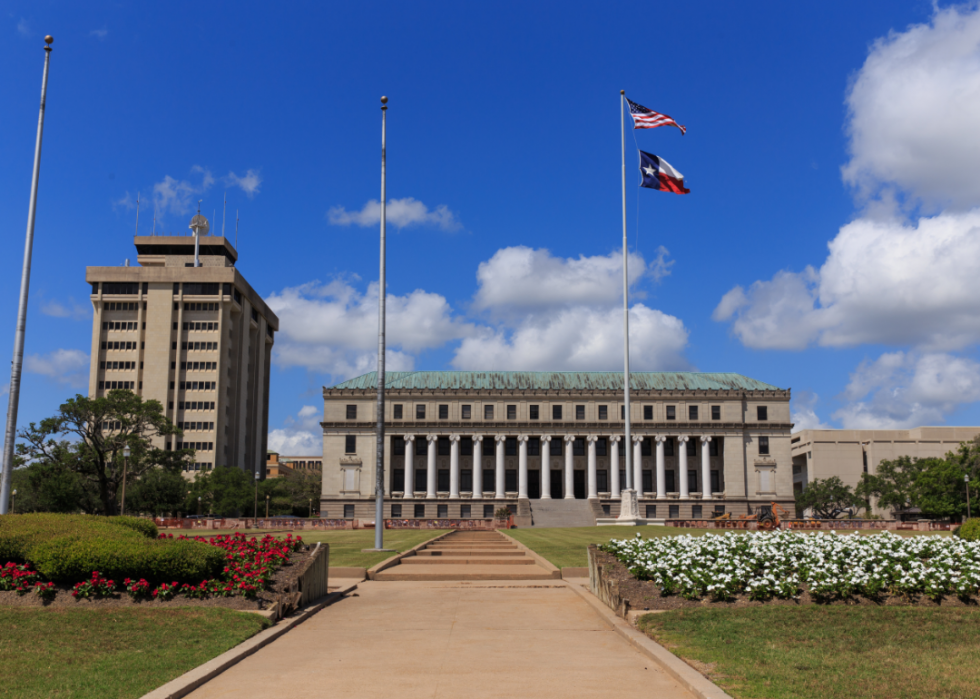
#17. College Station-Bryan, Texas
- Median annual wage: $67,590 (38.1% greater than national average)
- 90th percentile wage: $97,530 (12.8% less than national average)
- Median hourly wage: $32.50
- Employment: 190 (1.7 per 1,000 jobs)
Although the College Station-Bryan housing market had some slight losses at the beginning of the pandemic, it bounced back by summer 2020, as Texas A&M students and employees returned. The local housing inventory remains low, while the average number of days homes stay on the market has slightly increased since 2019.

#16. Boston-Cambridge-Nashua, Massachusetts-New Hampshire
- Median annual wage: $67,820 (38.6% greater than national average)
- 90th percentile wage: $125,470 (12.2% greater than national average)
- Median hourly wage: $32.61
- Employment: 1,660 (0.6 per 1,000 jobs)
Boston’s real estate market stayed strong throughout the pandemic, ultimately ranking ninth among the 10 hottest housing markets in Urban Land Institute’s 2021 Emerging Trends in Real Estate. House sales in the metropolitan area are projected to increase by 5.4% in the next year, with downtown Boston as one of the few markets where inventory is actually higher than normal.
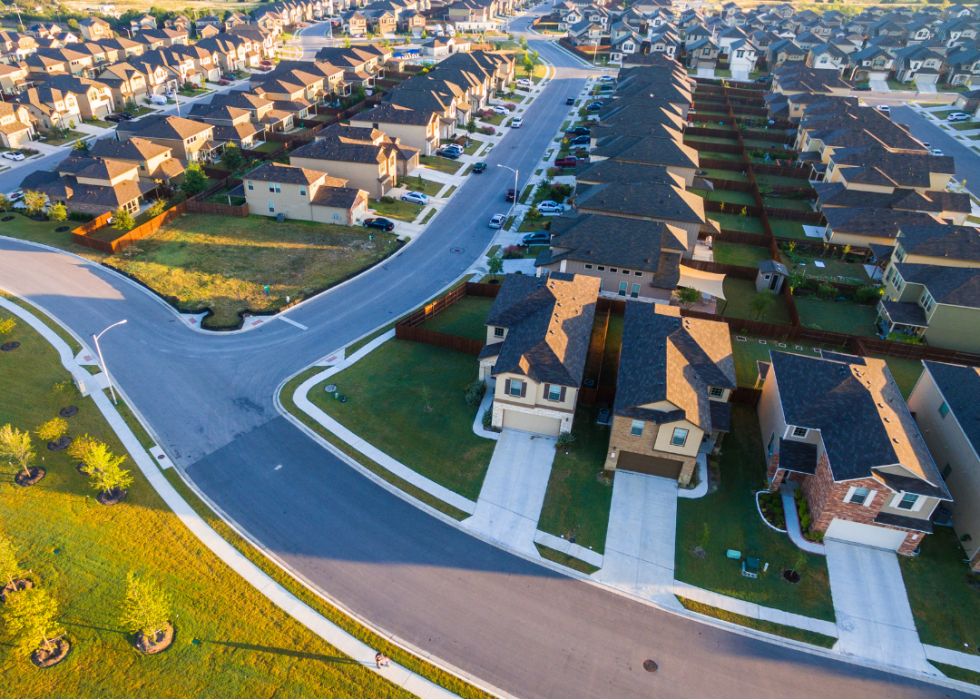
#15. West Texas Region of Texas nonmetropolitan area
- Median annual wage: $68,010 (39.0% greater than national average)
- 90th percentile wage: $108,140 (3.3% less than national average)
- Median hourly wage: $32.70
- Employment: 120 (0.6 per 1,000 jobs)
In recent years, the West Texas housing market has reliably grown competitive due to the oil and gas boom in the region’s Permian Basin. The past year has seen West Texas average home prices grow, and the average sale price per square foot rose as well.
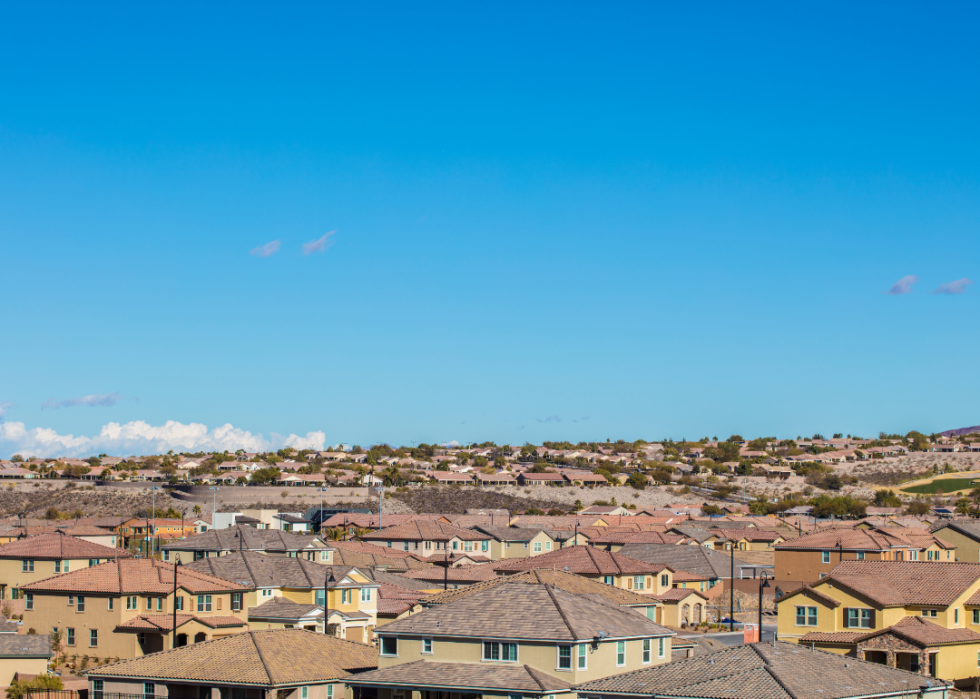
#14. Las Vegas-Henderson-Paradise, Nevada
- Median annual wage: $68,410 (39.8% greater than national average)
- 90th percentile wage: $100,510 (10.1% less than national average)
- Median hourly wage: $32.89
- Employment: 1,840 (1.8 per 1,000 jobs)
While the Las Vegas area’s unemployment rate reached an all-time high of 34.2% early in the pandemic, local home prices concurrently reached an all-time high. This is because luxury Las Vegas real estate has been largely responsible for driving the market, and this boom in luxury real estate can be credited to low local interest rates.

#13. Houston-The Woodlands-Sugar Land, Texas
- Median annual wage: $68,560 (40.1% greater than national average)
- 90th percentile wage: $151,050 (35.1% greater than national average)
- Median hourly wage: $32.96
- Employment: 4,970 (1.6 per 1,000 jobs)
The Houston real estate market had a record-breaking 2020, selling $35.3 billion worth of properties, and shortening the average days a home stayed on the market from 59 to 46 days. This housing boom can be credited to extremely low mortgage rates and a low home inventory, trends that are expected to continue throughout 2021.
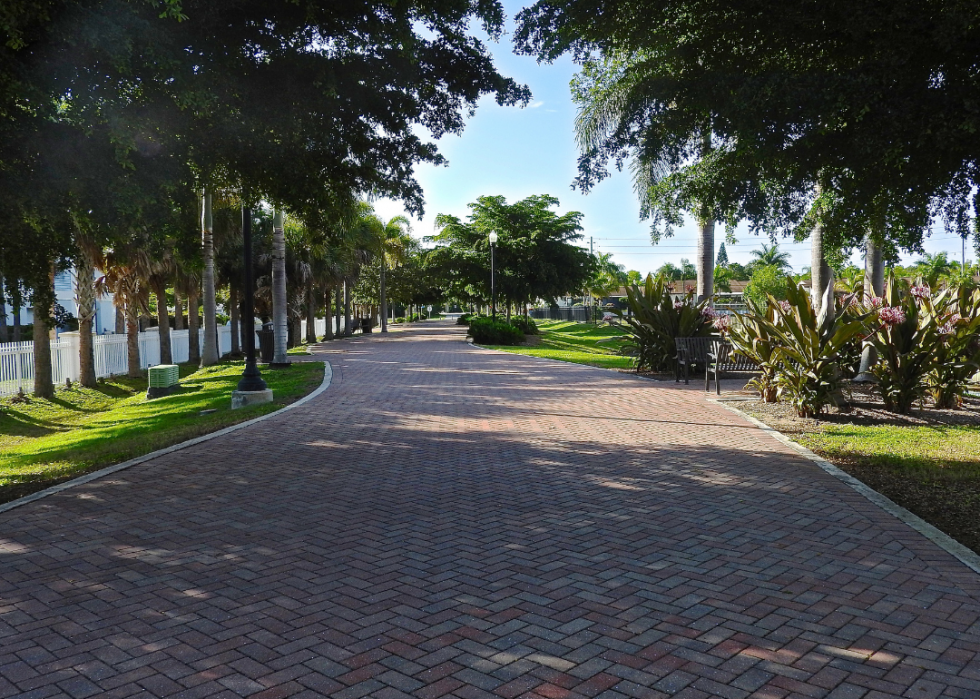
#12. Punta Gorda, Florida
- Median annual wage: $69,370 (41.8% greater than national average)
- 90th percentile wage: $98,370 (12.0% less than national average)
- Median hourly wage: $33.35
- Employment: 180 (3.7 per 1,000 jobs)
In the Punta Gorda housing market, average home prices are increasing incrementally, while the average number of days houses stay on the market is decreasing. The average house price is currently $271,945, while homes stay on the market for around 84 days (two days less than the January 2020 average).
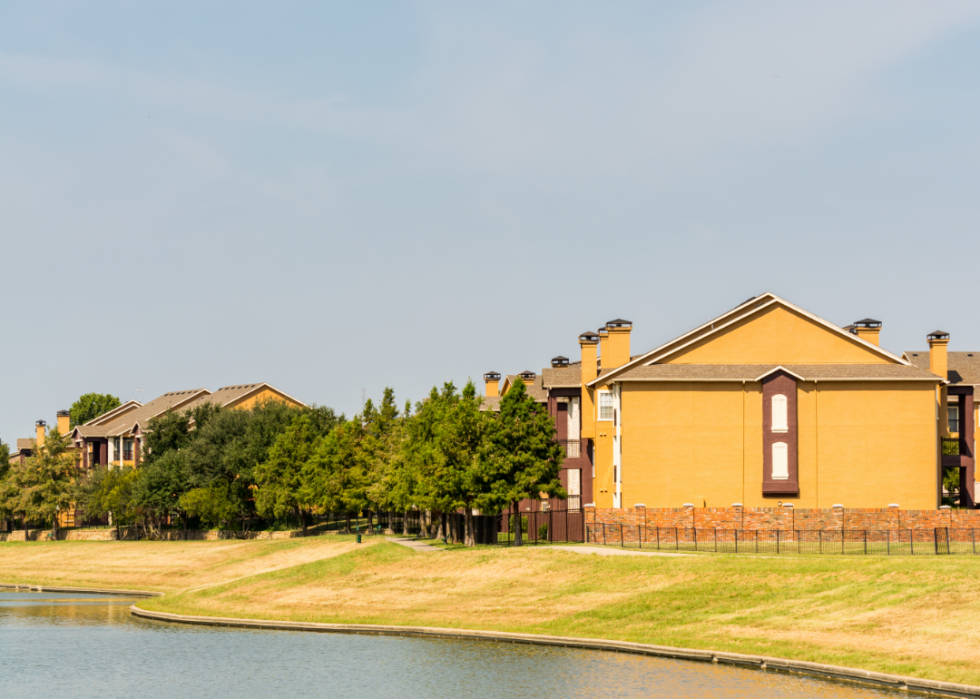
#11. Dallas-Fort Worth-Arlington, Texas
- Median annual wage: $71,380 (45.9% greater than national average)
- 90th percentile wage: $125,440 (12.2% greater than national average)
- Median hourly wage: $34.32
- Employment: 5,200 (1.4 per 1,000 jobs)
Dallas’ economy has been bolstered by the city’s status as a strong job hub throughout the pandemic, making it one of the fastest-growing regions in the country (the population increased by almost 2% in 2020). Home prices are projected to increase by almost 16% in 2021.

#10. Bridgeport-Stamford-Norwalk, Connecticut
- Median annual wage: $72,700 (48.6% greater than national average)
- 90th percentile wage: $194,560 (74.0% greater than national average)
- Median hourly wage: $34.95
- Employment: 480 (1.2 per 1,000 jobs)
This Connecticut housing market is set to see one of the six largest increases in home prices in the country over the next year. It’s projected to see a 7.8% increase in prices, and home prices have already increased by an average of 14% (the average price is $245,000) since 2020.

#9. Rochester, New York
- Median annual wage: $73,100 (49.4% greater than national average)
- 90th percentile wage: $135,160 (20.9% greater than national average)
- Median hourly wage: $35.14
- Employment: 150 (0.3 per 1,000 jobs)
Rochester’s economic recovery in the coming year is promising, since the town’s major industry sectors (such as information technology construction) have shown strong signs of rebounding, and millennials have moved there en masse. The average home sales price in the county has increased by almost 10%, while inventory has dropped by nearly 40%.

#8. San Jose-Sunnyvale-Santa Clara, California
- Median annual wage: $75,650 (54.6% greater than national average)
- 90th percentile wage: $156,310 (39.8% greater than national average)
- Median hourly wage: $36.37
- Employment: 570 (0.5 per 1,000 jobs)
The San Jose market has remained strong for months, with a combination of high demand and low inventory. San Jose homes took an average of only 19 days to sell in February 2021, while the local housing market is projected to grow by 10.8% in price and sales over the next year.

#7. Anchorage, Alaska
- Median annual wage: $76,970 (57.3% greater than national average)
- 90th percentile wage: $106,510 (4.7% less than national average)
- Median hourly wage: $37.01
- Employment: 140 (0.8 per 1,000 jobs)
Although Anchorage and the entire state of Alaska’s economy was hit hard by the pandemic, home sales in the city reached record highs in 2020 and are set to continue in 2021. This boom was driven by a combination of low interest rates and a low inventory of available houses, leading to a spike in demand as families sought to upsize their homes while spending more time at home and retirees sought to downsize.
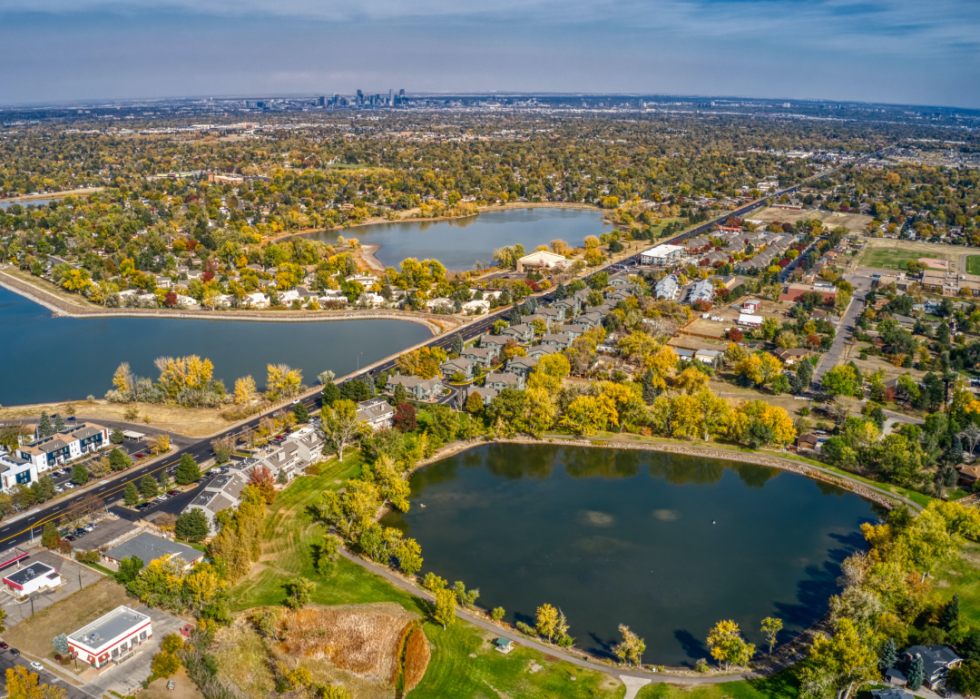
#6. Denver-Aurora-Lakewood, Colorado
- Median annual wage: $78,050 (59.5% greater than national average)
- 90th percentile wage: $136,360 (22.0% greater than national average)
- Median hourly wage: $37.53
- Employment: 2,360 (1.6 per 1,000 jobs)
The Denver housing market has grown feverishly in the past year, with the average house price up to $629,000 in February 2021 (as opposed to $530,000 in January 2020), and the average home selling in just five days in January 2021 (as opposed to 24 days in January 2020). However, inventory in January 2021 also reached a record low with fewer than 2,400 houses, driving higher prices and a competitive market.

#5. Northwest Colorado nonmetropolitan area
- Median annual wage: $78,210 (59.8% greater than national average)
- 90th percentile wage: $121,250 (8.5% greater than national average)
- Median hourly wage: $37.60
- Employment: 320 (2.6 per 1,000 jobs)
The Northwestern Colorado housing market remained stronger than the local economy throughout 2020, especially because the Colorado cost of living is significantly less than most municipalities on the American coasts. It’s set to see low supply and increased demand throughout 2021, with 8.3% home growth, more home construction, and increased mortgage rates.

#4. New York-Newark-Jersey City, New York-New Jersey-Pennsylvania
- Median annual wage: $81,660 (66.9% greater than national average)
- 90th percentile wage: $196,910 (76.1% greater than national average)
- Median hourly wage: $39.26
- Employment: 5,640 (0.6 per 1,000 jobs)
While the New York City real estate market has dealt with falling rent and increased vacancy rates, the Hudson County housing market has continued to improve, with the average rent in Jersey City increasing by 0.2% from April to June 2020. And New Jersey Realtors data found that the median sales price of properties in September 2020 (which was $375,000) increased by 21% from September 2019.

#3. Davenport-Moline-Rock Island, Iowa-Illinois
- Median annual wage: $81,810 (67.2% greater than national average)
- 90th percentile wage: $98,790 (11.6% less than national average)
- Median hourly wage: $39.33
- Employment: 110 (0.6 per 1,000 jobs)
During the coronavirus pandemic, sales of Davenport area homes increased by 24.7% from June to July 2020. This coincided with the existing inventory dropping by 21%, largely increasing demand for families wishing to relocate.
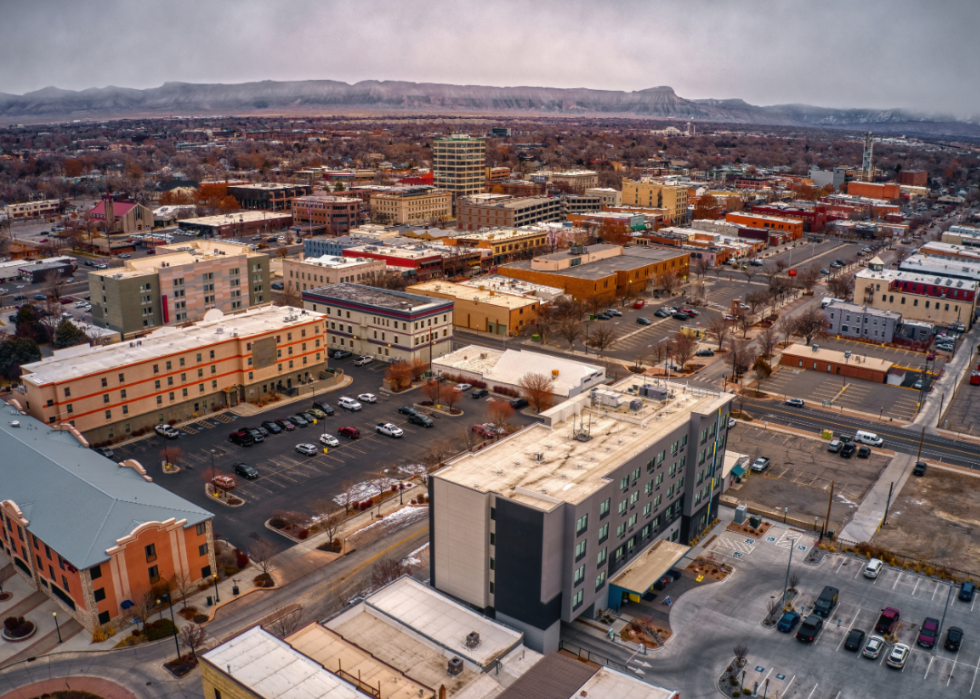
#2. Grand Junction, Colorado
- Median annual wage: $87,280 (78.4% greater than national average)
- 90th percentile wage: $105,630 (5.5% less than national average)
- Median hourly wage: $41.96
- Employment: 110 (1.8 per 1,000 jobs)
Right now, middle class families in particular are searching for houses in Grand Junction, due to the hot housing market (but low house inventory) and low interest rates. The average house price in the area rose by 12.1% in 2020 (to $287,000).

#1. Midland, Texas
- Median annual wage: $94,130 (92.4% greater than national average)
- 90th percentile wage: $142,040 (27.0% greater than national average)
- Median hourly wage: $45.25
- Employment: 180 (1.7 per 1,000 jobs)
The 2020 Midland, Texas housing market remained largely as it was before the pandemic, with increasing numbers of sales and higher average house prices. Housing inventory is set to drop even further, with expert Kerri Payne James predicting the number of homes on the Midland market will drop to 500 by summer 2021.



